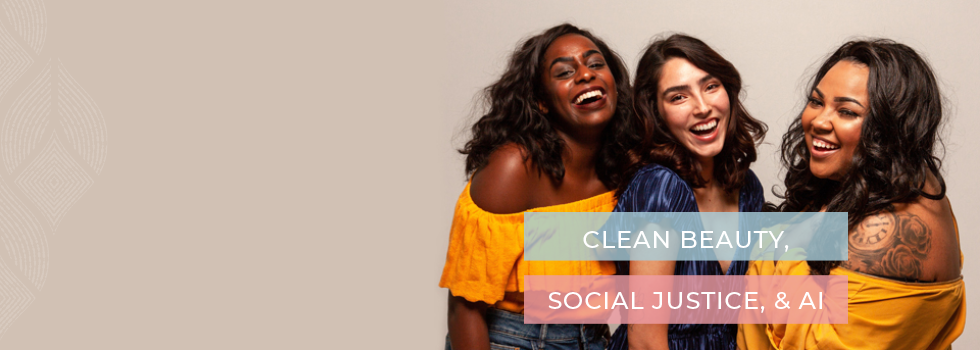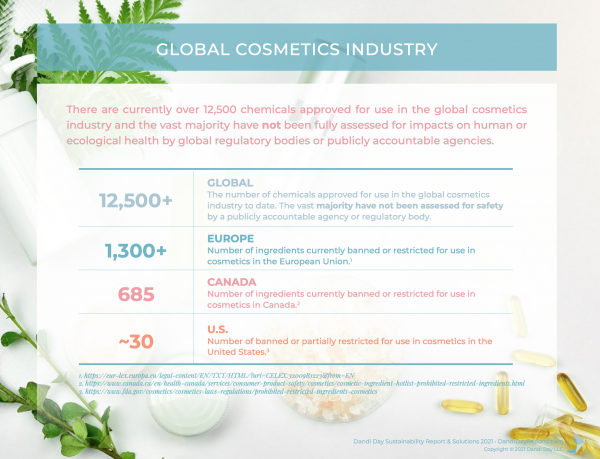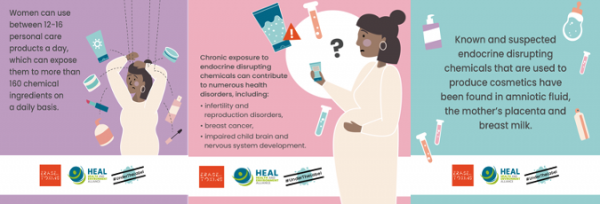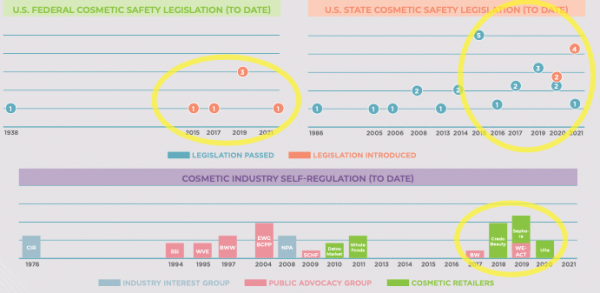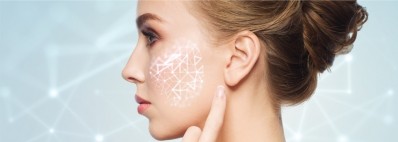Promotional Features
Clean Beauty, Social Justice, and Artificial Intelligence.
Clean Beauty
When we think about Clean Beauty, the conversation is very heated and polarized for the industry and some consumers. The industry typically takes a position that Clean Beauty lacks scientific evidence while consumers demand transparency. As we reflect, the movement has a greater context of social justice. Chemists and product creators are the industry's workhorses, and the trend has demanded more and more from them. Support for the chemists provides the opportunity, power, and solutions as a pivotal part of the movement.
The Clean Beauty History
There are many interpretations of clean beauty, dependent on where you live and work. It is a global conversation that emerged from the California indie market during the late 2000s. Around 2015 the trend moved into the U.S. mainstream. The movement was the cosmetic industry’s impact of California state legislature from decades before, Proposition 65. The proposition became law in November 1986 by California voters. The official name of Proposition 65 is the Safe Drinking Water and Toxic Enforcement Act of 1986.1 The proposition requires warning labels from businesses for transparency to citizen’s significant exposures to chemicals that cause cancer, birth defects, or other reproductive harm. Although the proposition does not ban the use of a chemical, it does deter marketers and brands from using ingredients that would require a warning label on their product.
The state law, not federal law, changed the dynamic of the domestic and global cosmetic industry. In addition to the complexities of state and federal government, clean beauty is a living example of democratic capitalism – “a political and economic system that combines capitalism and strong social policies.”2 The cosmetic industry, public advocacy groups, retailers, and brands evolve in an ecosystem that calls for social justice.
Why Clean Beauty?
In 1938, the U.S. government passed the Federal Food, Drug, and Cosmetic Act to prevent adulterated or misbranded products from entering the cosmetics market. There have been no updates or reforms to the federal law in 83 years. Several U.S. legislative reforms to the Federal Food, Drug and Cosmetic Act have been proposed in congress to address cosmetic safety. The most recent activity took place six years ago without success. While the FDA requires disclosures of product, contents, and warnings labels, there are areas they do not currently regulate. This leaves the industry, the market, and the people's voice to self-regulate.
Concerns over U.S. regulatory gaps in governmental and industry accountability compared to the global industry leave consumers questioning their risk for health concerns such as carcinogens, mutagens, reproductive toxicants, allergens, and endocrine disruptors.
What does Clean Beauty Represent?
The focus for clean beauty in the chemist community typically centers around ingredient safety, toxicity, and free-from claims. However, the movement represents a much larger conversation.
Clean beauty is rooted in social and environmental justice. The social aspect of feminism has a component of reproductive rights grounded in recognizing that individuals are entitled to bodily autonomy and the ability to make their own reproductive choices.4 Individuals cannot make informed health choices if policies do not exist that provide transparency to chemicals that could cause reproductive harm, such as infertility, birth defects, and cancer. Clean beauty also seeks to protect vulnerable communities. Decades of numerous studies on chemicals commonly found in cosmetics demonstrate both the body burden of these chemicals in adults, children, and even newborns. Even at minimal amounts these chemicals can have harmful effects during fetal development and other critical development windows such as infancy and puberty.5
What does Clean Beauty continue to mean for the U.S. industry?
The ongoing data collection from scientific studies challenges global industry to increase transparency and move toward safer alternatives. For the U.S. the first step is the Safe Cosmetics and Personal Care Products Act introduced into Congress in 2019 and still under review.6
The federal act requires the some of the following changes for cosmetic safety and the industry:
- Immediately ban some of the most toxic chemicals in cosmetics
- Require full disclosure of all ingredients
- Require supply chain transparency and industry-wide sharing of safety data
- Provide public access to serious adverse event reports
- Protect vulnerable populations including infants, children, pregnant woman workers, and other highly exposed populations by creating a safety standard for cosmetic ingredients based on a reasonable certainty of no harm
More progressed in their policies, the European Union released the recent European Chemicals Strategy for Sustainability towards a toxic-free environment. The strategy “includes important commitments to reduce the production of and the related exposure to harmful chemicals and drive the transition towards safer alternatives, including to identify better and regulate endocrine disruptors.”7
The Health and Environment Alliance (HEAL) and Tegengif have recently released some infographics that bring to light the adverse effects of certain chemicals on women, reproductivity, and children. What is the current state of Clean Beauty in the U.S.?
Clean beauty in the U.S. has caused many disruptions, and lack of harmonized standards pose the current challenges:
- Brands and retailers create and define their internal standards
- Lack of robust support for ingredient safety standardization across the cosmetic industry in the U.S.
- Inconsistent supply chain transparency
- Implementation of 'clean' standards perceived as a burden on the product development process by some manufacturing partners, regulatory professionals, and cosmetic chemists
Despite the challenges, clean beauty in the U.S. is not going away. It continues to take a more precise definition, given the rise in federal and state agencies, public advocates, and retailers. It is reasonable to expect continued movement for the U.S. market as a step towards harmonization with the EU precedence.8
The graph provides a timeline overview of movement from the cosmetic industry infrastructure that has led to and continues to lead toward policy change. the U.S. Federal, U.S. state, and the cosmetic industry self-regulation. The states and retailers have had the most influence in the clean beauty movement.R&D AI for Retailer Clean Beauty Standards
The rapid changes in the market make it difficult to validate and qualify ingredients to start the formulation process. It has become time-intensive and complex as chemists and product developers bear the burden of the lack of harmonized standards. The fragmented market challenges a system that has relied on flagship ingredients that ensure performance and stability. As these flagship ingredients and "tools" are taken away from the chemist toolbox, they spend more time researching ingredients with the same performance to meet various retailer standards. The shift in retailer standards creates a shift in R&D and product development across four areas of the development process; contract manufacturers, independent research and development chemists, turnkey companies, and indie brands.
We see new R&D technology tools for the market to support the shift in retailer standards, just as we have seen technology platforms in the previous years that support the consumer and marketing experiences. Companies like Novi Connect, ClearForMe, and The Good Face Project are A.I. tools launched in the past few years to help increase transparency throughout the supply chain. "Artificial Intelligence (A.I.) has a profound effect on justice and well-being in individual, social, and global contexts."9
The Good Face Project launched the Good Face Formulation tool in April 2021. It empowers chemists to efficiently formulate to various retailer standards, geographies, and consumer and industry certifications. Major retailers include Target, QVC, Whole Foods, Walgreens, and specialty retailers, include Sephora, Ulta Conscious Beauty, Blue Mercury, Credo, Detox Market, and the Grove Collaborative. Regular additions of retailers, geographies, and certifications keep chemists up to speed with the rapidly evolving domestic and global landscape.
Conclusion
Clean beauty is more than meets the eye. It is a U.S. culture cry and rise of divine feminine energy to protect the vulnerable; women, children, BIPOC communities, and our future. Progress and change are messy, and amid the mess, product creators and chemists are at the center of the movement to deliver social justice in a formula. The demands are high, and new A.I. technology empowers everyday R&D heroes to rise to the occasion. The chemist stands at the epicenter of creation for a more just and equitable future, one product at a time.
-----
References:- p65warnings.Ca.gov, www.p65warnings.ca.gov/about.
- Wilde, Keith & Schulte, R. G., 2001. "Democratic capitalism vs. binary economics," Journal of Behavioral and Experimental Economics (formerly The Journal of Socio-Economics), Elsevier, vol. 30(2), pages 99-118, March.
- Hoffman Peri, Hayley and Dr. Nicole Acevedo. "Dandi Day Sustainability Report and Solutions 2021." 2021.
- Mykitiuk, Roxanne, and Robyn Lee. “Reproductive Rights in Affluent Nations.” Osgoode Digital Commons, 2015, digitalcommons.osgoode.yorku.ca/scholarly_works/2554/.
- Hoffman Peri, Hayley and Dr. Nicole Acevedo. "Dandi Day Sustainability Report and Solutions 2021." 2021.
- Schakowsky, Janice D. “Text - H.R.4296 - 116th Congress (2019-2020): SAFE Cosmetics and Personal Care Products Act of 2019.” Congress.gov, 13 Sept. 2019, www.congress.gov/bill/116th-congress/house-bill/4296/text.
- “Chemicals Strategy.” Environment, ec.europa.eu/environment/strategy/chemicals-strategy_fr.
- Hoffman Peri, Hayley and Dr. Nicole Acevedo. "Dandi Day Sustainability Report and Solutions 2021." 2021.
- “Feminism, Social Justice, and AI.” Feminism, Social Justice, and AI, feminism-social-justice-ai.org/.
